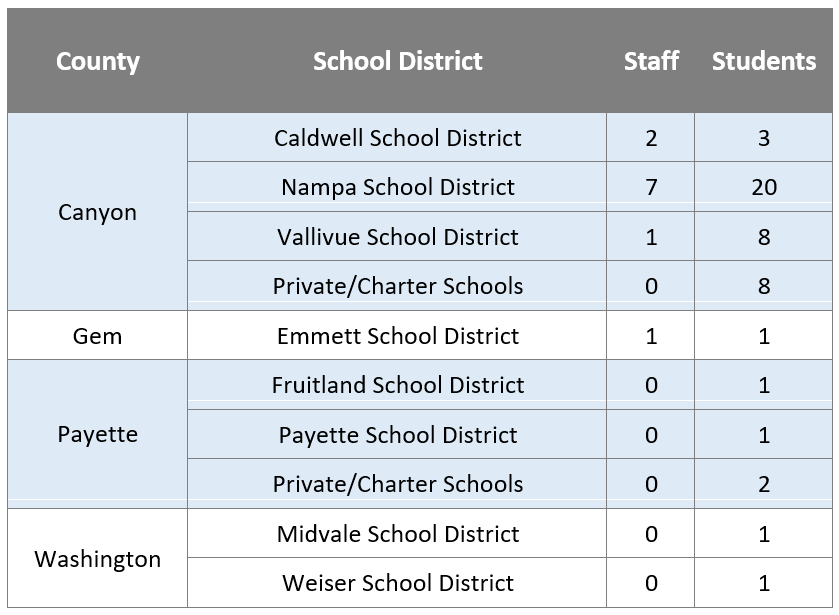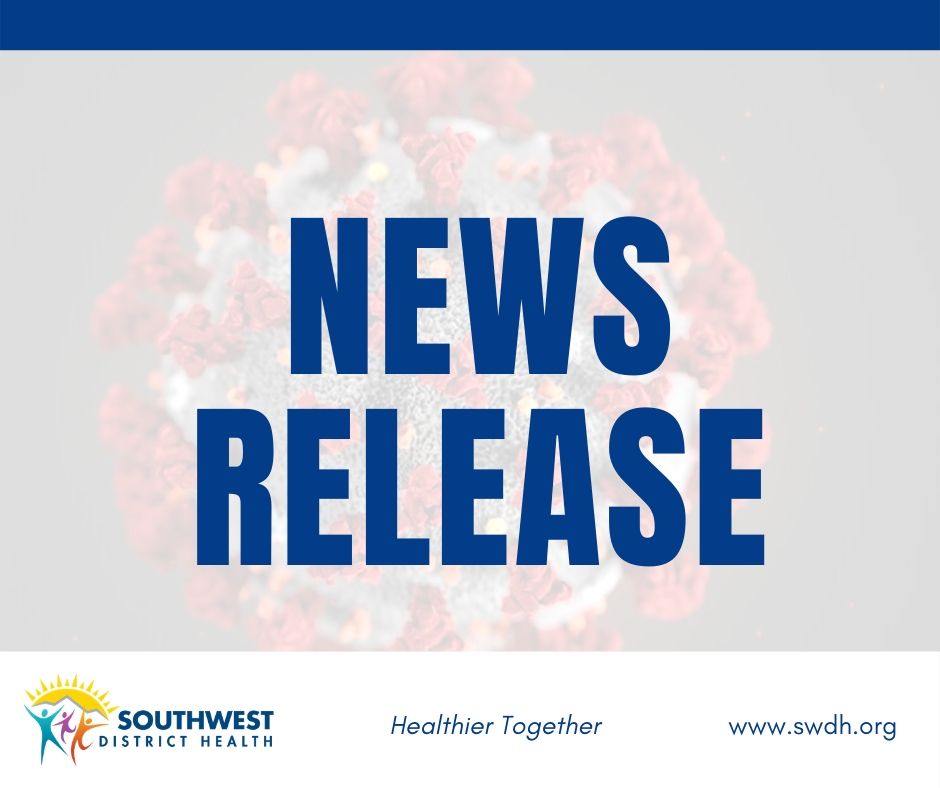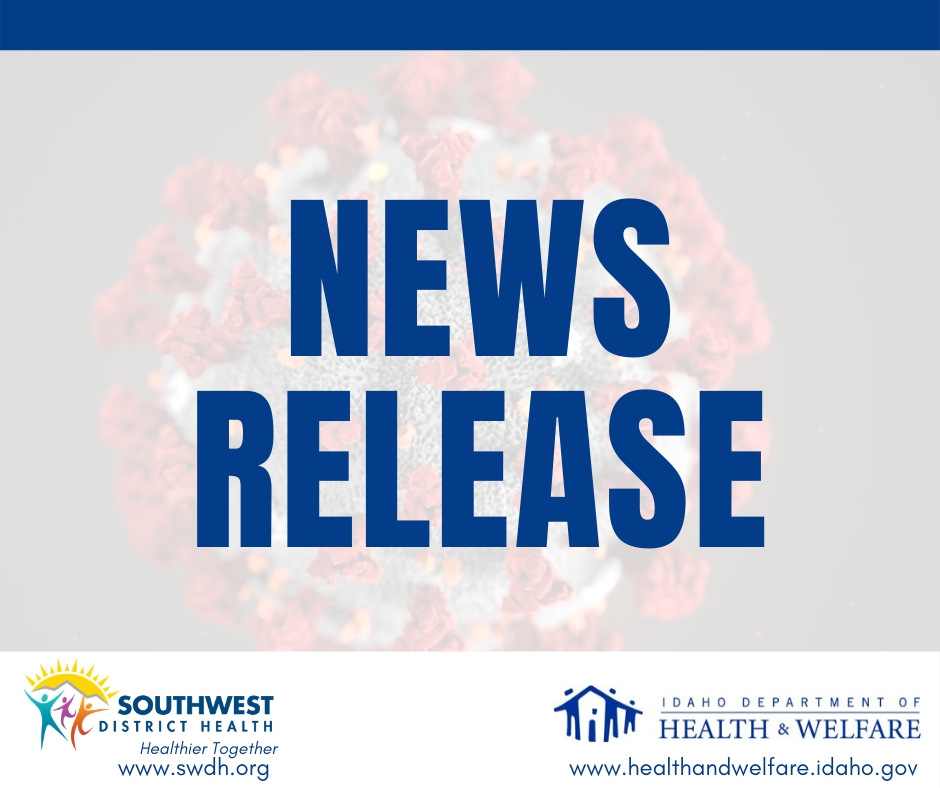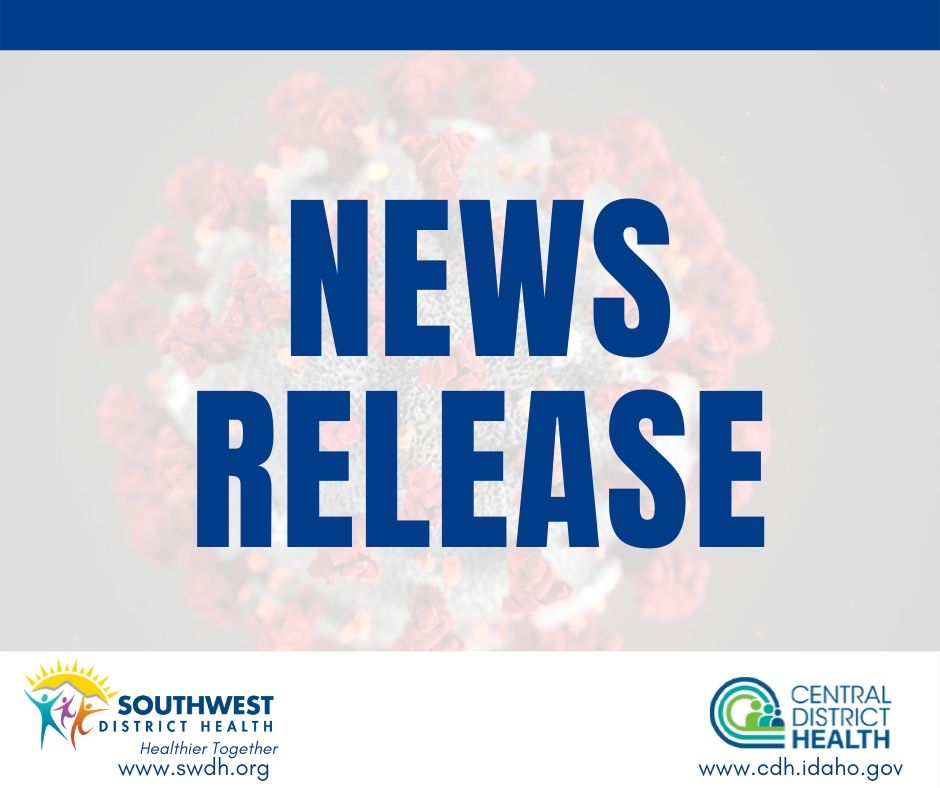FOR IMMEDIATE RELEASE
Four counties within Southwest District Health’s jurisdiction at orange health alert level
CALDWELL, IDAHO – COVID-19 continues to spread throughout District 3. Some areas within District 3 may be experiencing the beginning of a downward trend in COVID-19, with declining daily incidence rates and positivity rates. However, some areas in District 3 are experiencing increasing rates of COVID-19 incidence. This is based on data available for the date range January 10, 2021 – January 23, 2021. Adams, Canyon, Gem, and Payette counties are at the orange COVID-19 health alert level this week. Currently, Owyhee and Washington counties are at the red health alert level. As of January 23, 2021, the daily district-wide incidence rate per 10,000 population is 4.64.
Thank you to residents of District 3 for continuing to follow current recommendations to slow the spread of COVID-19. As a reminder, all six counties in the district continue to experience community spread, which puts people living in and visiting these communities at higher risk for exposure. It is the goal of Southwest District Health to work our way back to a place where we have no community spread.
The information used in determining county health alert levels is provided below.
ADAMS COUNTY – Health Alert Level: Orange
Adams County will remain in the orange health alert level, with a decreasing incidence rate, and no evidence of COVID-19 cases in primary schools. Adams County saw a daily COVID-19 incidence of 3.87 daily new cases per 10,000 people, which is steadily decreasing. Many of these new cases can be traced to workplace and household exposure as well as through social gatherings. Evidence collected through investigations during the two-week period show a decrease in community transmission in Adams County, with 85.71% of cases able to identify a potential exposure source. Additionally, the test positivity rate for Adams County is 14.48%, which is increasing and concerning to SWDH epidemiologists. No cases of COVID-19 were reported in Adams County schools.
CANYON COUNTY – Health Alert Level: Orange
Canyon County will move to the orange health alert level due to a decreasing daily incidence rate and positivity rate. Canyon County has a daily incidence rate of 4.84 daily new cases per 10,000 people which is decreasing. Canyon County has a positivity rate of 12.44%, which is decreasing but still shows that COVID-19 is more prevalent in the community than our data show. Only 61.76% of COVID-19 cases have reported knowing where they were exposed, which points to community spread. SWDH investigators are seeing cases exposed through social gatherings, travel, workplaces and households. Sixteen congregate living facilities are reporting cluster outbreaks. Multiple schools in Canyon County are reporting sporadic, imported cases with evidence of two cluster outbreaks.
GEM COUNTY – Health Alert Level: Orange
Gem County will remain in the orange health alert level, due to a decreasing incidence rate and positivity rate. Gem County has a daily incidence rate of 4.10 daily cases per 10,000 people which is decreasing. The test positivity rate for Gem County is 8.51% which is decreasing. Four congregate care facilities in Gem County are facing a sustained COVID-19 outbreak. 77.78% of new cases that were contacted knew where they were exposed to COVID-19, which is trending slightly down and indicates an increase in community transmission. Of the individuals who could identify their exposure source, most were attributed to household exposure and workplaces. Multiple cases of COVID-19 were reported in Gem County schools with no evidence of transmission within schools.
OWYHEE COUNTY – Health Alert Level: Red
Owyhee County will remain in the red health alert level this week, due to precautionary measures outlined in our board-approved Health Alert Level Guidelines as stated, “At least two full weeks will be spent in a Health Alert Level before determinations to move to a lower less severe level (e.g., from High to Medium).” Owyhee County currently has a daily incidence rate of 1.99 daily cases per 10,000 people, which is decreasing. The test positivity rate is 12.61% which is decreasing but still shows that COVID-19 is much more prevalent than our data show. Only 40.91% of cases can identify an exposure source, which decreased dramatically and indicates community transmission. SWDH epidemiologists are seeing cluster outbreaks in Owyhee County primarily from social gatherings, travel, workplaces, and household exposure. No COVID-19 cases were reported in Owyhee County schools during this date range, although one cluster outbreak is still being monitored.
PAYETTE COUNTY – Health Alert Level: Orange
Payette County will remain in the orange health alert level, due to a decreasing positivity rate and incidence rate. Payette County has a daily incidence rate of 4.07 daily new cases per 10,000 people which is decreasing. Payette County has a test positivity rate of 12.69%, which is decreasing but still higher than we would like to see. 68.18% of cases know where they were exposed to COVID-19, which is decreasing and indicates community transmission. SWDH epidemiologists are concerned by cluster outbreaks within local workplace settings, including Idaho and Oregon workplaces, as well as through household exposure. Multiple schools in Payette County are reporting sporadic, imported cases with no evidence of cluster outbreaks.
WASHINGTON COUNTY – Health Alert Level: Red
Washington County will remain in the red health alert level, due to an increasing daily incidence rate and an elevated positivity rate. Washington County currently has a daily incidence rate of 5.98 daily cases per 10,000 people, which increased slightly. The positivity rate for Washington County is 15.56%, which is decreased but still shows that COVID-19 is more prevalent in the community than our data show. 67.86% of confirmed cases know where they were exposed to COVID-19, which points to a slight increase in community transmission. SWDH epidemiologists are seeing transmission occurring primarily through households and workplace exposures. One school in Washington County reported one imported case of COVID-19 with no evidence of a cluster outbreak.
WEEKLY CASES BY SCHOOL DISTRICT
The following table represents data on confirmed and probable COVID-19 cases among students and staff attending in-person classes where investigations began between January 17, 2021 – January 23, 2021.

The following table represents data on the number of staff and students currently in quarantine and isolation on the day the data are pulled and may not account for individuals who have been released from quarantine or are just entering quarantine.
Those in quarantine have been identified as a close contact of a positive case and are being asked to stay home for 14 days to monitor for symptoms. Those in isolation are currently positive for COVID-19 and are asked to isolate away from others for a minimum of ten days from the onset of symptoms to prevent further spread of the infection.

Region 3 data are available on the Southwest District Health website at https://swdh.id.gov/covid19/. Please visit https://coronavirus.idaho.gov/ for statewide information. Questions may be directed to the SWDH COVID-19 Call Center Monday through Friday from 8:00 a.m. to 5:00 p.m. (except for observed holidays) at 208-455-5411.
# # #
Media Contacts:
Ashley Anderson Ashley.Anderson@phd3.idaho.gov
Katrina Williams Katrina.Williams@phd3.idaho.gov




